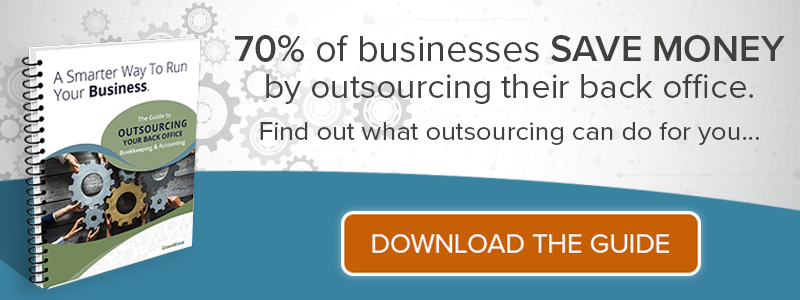
You got the money from the PPP loan. Now how do you make sure the money becomes a grant that is 100% forgiven? Here is our guide to help set yourself up to receive those funds as a grant with full loan forgiveness
There are three basic conditions to focus on:
- Headcount Requirement
- Payroll Payment Requirements
- Rent & Utility Requirements
|
*Update from SBA as of May 15th* Recently released, new policies on Loan Forgiveness Application from the SBA due to your bank within 60 days of completing your 8-week period. Here are some new things we noticed on this application: Alternative Payroll Covered Period: Borrowers with a biweekly (or more frequent) payroll schedule may elect to calculate eligible payroll costs using the eight-week (56-day) period that begins on the first day of their first pay period following their PPP Loan Disbursement Date (the “Alternative Payroll Covered Period”). Eligible payroll costs. Payroll costs incurred but not paid during the Borrower’s last pay period of the Covered Period (or Alternative Payroll Covered Period) are eligible for forgiveness if paid on or before the next regular payroll date. |
Headcount Requirements For PPP loan forgiveness
The first PPP requirement is headcount. The most important goal of the program is to make sure you’re getting back to a hundred percent of your baseline headcount.
How do you know what your baseline is?
There are two periods for which you can compare: a period from Feb 15th - June 30th 2019 and a period from Jan 1st - Feb 29th 2020. Choose the period with the fewer Average Full Time Employees. This will be your baseline.
Example: If you had 22 full time equivalent employees (FTE) at the beginning of 2019, and 20 at the beginning of 2020, choose the 20 from 2020 to be your baseline. In order to get a hundred percent forgiveness, you need to make sure that by June 30th you are back up to 20 full time employees on payroll.
What happens if you don’t reach the number of FTEs? Let’s say you are only going to get to 18 out of the 20 by June 30th. This means that the max that you are able to apply for forgiveness for is 90% (since you were only able to keep 90% of your employees).
Now at this point, no matter what you do and how much money you spend, only 90% of the money you got can be considered a grant. The remaining 10% of that is going to be a loan that you'll have to pay back at 1% over two years.
The reason for this is the government wants to minimize how much they have to pay in unemployment. They want you to pay your employees rather those employees having to apply for unemployment.
It's actually more important for you to hire people at a reduced rate than it is to get back full time employees. The government wants to incentivize businesses to keep people on payroll.
“What if my employees are making more on unemployment and don’t want to come back”. The SBA says if you make a written offer to a former employee (who was either terminated or laid off) to come back to work, and they turn you down in writing, you can count this employee as a head count.
Make sure it's all in writing. Offer their job back in writing, make sure their decline is in writing, and then keep that paperwork!
Payroll Requirements For PPP loan forgiveness
The second most important compliance is payroll. The language of the PPP Loan says you must be paying 75% of your total salaries from your base period.
This does not mean 75% of each person's pay. This means that your total payroll needs to be within 75% of what it was during your baseline period.
Example: Let's say you laid off a hundred thousand dollar employee and he doesn’t want to come back. You can hire two other FTE positions at $50,000 a piece and this counts the same towards the salary requirement.
What does this mean?
You can not bring everyone back at half pay and still get a hundred percent. However, you can bring everyone back at 75% pay and 100% of your spending is eligible to be a grant.
The head count requirements and the salary requirements are completely separate. As long as you get to a total number of employees, and as long as their total pay adds up to at least 75% of what you were paying for gross payroll during those previous base periods, you're in compliance.
A checklist of what “payroll costs” include:
- Payroll costs - The employee's gross wages up to $100,000 per person. If a person makes more than a hundred thousand, only the first $100,000 counts.
- Healthcare Costs or Retirement Costs.
- State and local taxes only (federal taxes do not count).
Additional Costs
What other expenses are forgivable?
Lets go back to the structure of the loan when you applied for it...
The calculation of the amount you receive was two and a half times your average monthly payroll costs.
That means the amount it costs you to run payroll every month for these costs, multiplied by 2.5 - That is how much you should have received. However, you were only given two months (eight weeks) to spend it.
Therefore, you were technically given 2.5 months worth of money for a two-month period; You received more money than you would need to run for a two-month period.
The reason for this is to allow you to recoup up to 25% of your loan on other expenses, including:
- Rent
- Interest on Mortgage Expenses (NOT the principle, only the interest)
- What counts as mortgage interest? Any building or space related loan that sits on the books of YOUR business. You need to make sure that the property that you're paying the mortgage on is owned by (and on the balance sheet) of the business.
- Can I prepay my rent or mortgage? Pre-payment does not fall under the PPP loan forgiveness. Keep in mind, you are not supposed to use the money for anything if the pandemic wouldn't have happened.
- Normal utilities: Water, electric, internet, cable, phone, etc. What you would be paying for on a monthly basis.
- This is where some of the “gray area” falls. Our best practice is to not include anything that is not directly included in the language of the loan. Anything that is outside of this will further delay or deny your forgiveness application.
You have 60 days from the time you end your “eight weeks” period to request forgiveness from your bank. It will be up to our bank to determine your compliance and you will need to certify compliance and provide payroll tax returns.
BOTTOM LINE
Best practices suggestion: don’t do anything that you wouldn't have done if the pandemic wouldn’t have happened. Ask yourself: if you didn't have this money, would you be prepaying rent? If not, don’t do it. You are only supposed to be paying for costs that help to keep the business open.

.png?width=563&height=144&name=New%20GF%20Logo%20(37).png)
![5 Steps To Power Through 2021 How Smart Business Owners Get Stronger In A Recession [WEBINAR] Sign Up!](https://no-cache.hubspot.com/cta/default/549461/fcba028d-f3ee-4ae0-ae8a-d3eeb774803c.png)
